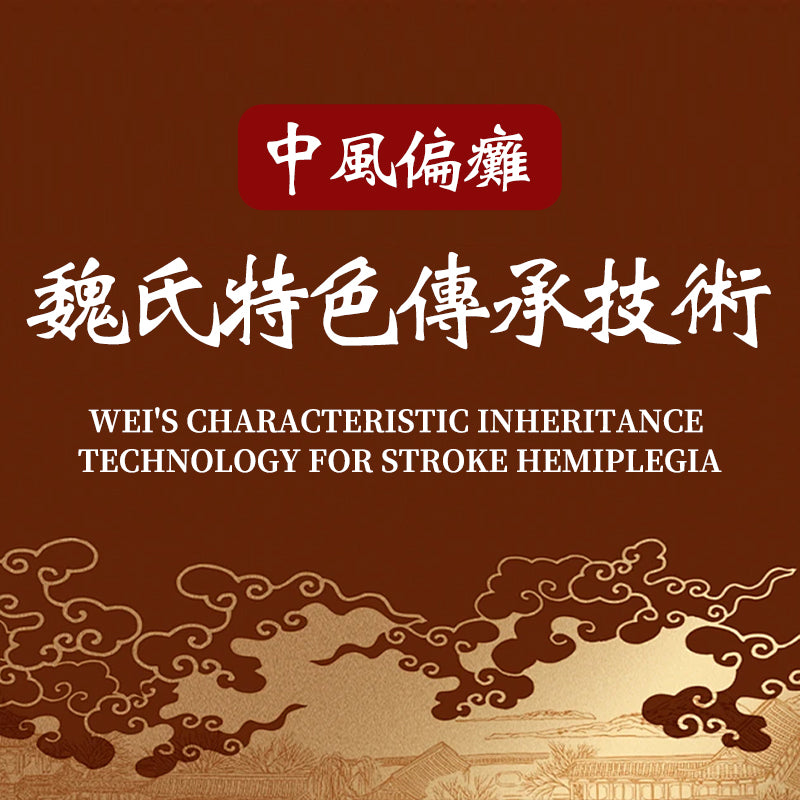御珍堂
中風偏癱魏氏特色傳承技術
中風偏癱魏氏特色傳承技術
Tidak dapat memuat ketersediaan pengambilan
課程簡介:
有四分之一的中風幸存患者都難逃二次復發的傷害,而中風的康復手法,在臨床上一直是個難題
魏老師的手法就是調理中風後遺癥的特色手法,魏氏中醫傳承200余年,中風療法是魏氏中醫的精髓所在,中風後遺癥雖然病癥比較復雜,但在魏氏中醫看來,根源都在於氣血的部分阻滯,在充分辨證的前提下找準病竈,逐步深入調理,就能恢復。
課程價值:
1.是魏氏家族獨門技術,是魏氏家族傳承了200多年的技術,線下聽一節課都上千的技術
2.這套課程是魏氏中醫尤為重要的一套手法,在歷代傳承中,從來就是密不外傳,魏主任臨床多年,見過太多求醫問藥的,今天魏主任將手法傳授給大家,希望能有更多的人遠離病痛的折磨
3.課程手法非常的全面,魏主任將課程精華總結到一起,就是為了讓更多的用合適的價格學習到更多的知識,課程包括指針療法、推拿、理筋等等,非常全面。
4.不僅有調理手法,還有患者自我康復的方法,是魏氏中醫的獨家秘法,雙效合一,療效更顯著,顧客更認可。
5.魏氏絕技很少外傳,目前只通過禦珍堂平臺魏主任親自講解傳承。
課程內容:
第一部分 中風後遺癥康復手法
一、中風後遺癥定義
二、中風後遺癥分型、臨床辨證
腦梗、腦出血、蛛網膜下腔靜脈出血、腦幹出血
三、中風後遺癥康復手法的基礎流程
針對於患側活動不利,肌張力過高,肌無力
四、中風後遺癥特殊的康復手法
針對於上臂、肩部、腕部、手指肌張力過大及肌無力;下肢膝關節、踝關節活動受限、肌張力過高、肌無力;後背部肌肉僵硬、俯臥位蜷腿受限。
五、中風後遺癥調理針法(一)
六、中風後遺癥調理針法(二)
針對於語言神經系統受壓導致的失語,口歪眼斜流涎、面神經麻痹,視覺神經受壓導致的偏盲癥運動系統受壓導致的關節活動不利、肌張力過大肌無力等
七、中風後遺癥康復鍛煉方法(一)
針對於上肢手指、腕部,下肢特殊康復鍛煉方法
八、中風後遺癥康復鍛煉方法(二)
針對於下肢和踝關節、膝關節的康復鍛煉
第二部分 中風引起的面癱魏氏特色手法
九、面癱的定義
十、面癱的病因病機
十一、面癱的穴位配伍
十二、面癱的推拿手法詳解
十三、面癱的理筋手法詳解
十四、面癱魏氏針法、灸法詳解
Course Introduction:
One quarter of stroke survivors cannot escape the harm of secondary recurrence, and rehabilitation techniques for stroke have always been a challenge in clinical practice
Teacher Wei's technique is a characteristic technique for regulating post-stroke sequelae. Wei's traditional Chinese medicine has been passed down for more than 200 years, and stroke therapy is the essence of Wei's traditional Chinese medicine. Although the symptoms of post-stroke sequelae are relatively complex, in Wei's traditional Chinese medicine view, the root cause lies in the partial blockage of qi and blood. With sufficient differentiation of syndromes, the lesion can be identified and gradually regulated to recover.
Course Value:
1. It is a unique technology of the Wei family, which has been passed down for more than 200 years. It is a technology that can be taught offline for thousands of years
2. This course is a particularly important set of techniques in Wei's traditional Chinese medicine, which has been passed down through generations and has never been disclosed. Director Wei has been clinical for many years and has seen too many people seeking medical treatment. Today, Director Wei will pass on the techniques to everyone, hoping that more people can stay away from the torment of illness and pain
3. The course methodology is very comprehensive. Director Wei summarized the essence of the course together in order to enable more people to learn more knowledge at an appropriate price. The course includes pointer therapy, massage, muscle management, and more, which are very comprehensive.
Not only does it have conditioning techniques, but it also has a method for patients to self recover, which is the exclusive secret of Wei's traditional Chinese medicine. It combines dual effects and has a more significant therapeutic effect, which is more recognized by customers.
5. Wei's unique skills are rarely spread outside, and currently only passed down through the personal explanation of Director Wei on the Yuzhen Hall platform.
Course content:
Part 1 Rehabilitation Techniques for Poststroke sequelae
1、 Definition of post-stroke sequelae
2、 Classification and clinical differentiation of post-stroke sequelae
Cerebral infarction, cerebral hemorrhage, subarachnoid hemorrhage, brainstem hemorrhage
3、 The basic process of rehabilitation techniques for post-stroke sequelae
For the affected side with poor mobility, high muscle tone, and muscle weakness
4、 Special rehabilitation techniques for post-stroke sequelae
Targeting excessive muscle tension and weakness in the upper arm, shoulders, wrists, and fingers; Lower limb knee and ankle joint limited mobility, high muscle tone, and muscle weakness; Muscle stiffness in the back and restricted leg curling when lying prone.
5、 Acupuncture therapy for post-stroke sequelae (1)
6、 Acupuncture therapy for post-stroke sequelae (II)
For aphasia caused by compression of the language nervous system, crooked mouth, slanted eyes, drooling, facial nerve paralysis, hemianopia caused by compression of the visual nerve, poor joint activity caused by compression of the motor system, excessive muscle tone, muscle weakness, etc
7、 Rehabilitation exercise methods for post-stroke sequelae (Part 1)
Special rehabilitation exercise methods for upper limb fingers, wrists, and lower limbs
8、 Rehabilitation exercise methods for post-stroke sequelae (II)
Rehabilitation exercises for the lower limbs, ankle joints, and knee joints
Part 2: Facial Paralysis Caused by Stroke - Wei's Characteristic Techniques
9、 Definition of facial paralysis
10、 The etiology and pathogenesis of facial paralysis
11、 Acupoint compatibility for facial paralysis
12、 Detailed explanation of massage techniques for facial paralysis
13、 Detailed explanation of the muscle management techniques for facial paralysis
14、 Detailed Explanation of Wei's Acupuncture and Moxibustion Techniques for Facial Paralysis
Share


